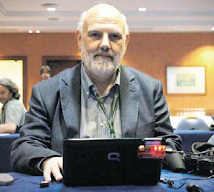
Dmitri Fedotkin, an economist at VTB Bank Europe Research, said in his statement that the major factor underpinning the weakening in activity had been a decrease in new orders, which fell for the first time in almost 10 years. According to the lastest data from Rostat, industrial output rose by an annual 3.2 percent in July (following a y-o-y of only 0.9% in June), a much slower pace than would be generally expected given that economic growth had been running at around a 7.5% annual rate.
And Russian industry is downsizing on employment. ``With output requirements set to fall in light of the drop in new work received during the month, Russian manufacturers shed staff on average in August,'' according to the VTB report``The current sequence of workforce shrinkage was extended to four months.
The economics of this is really very simple. Continuing internal price and wage inflation is making domestic industry uncompetitive. The cost of goods leaving Russian factories and mines was up an annual 33.7 percent in July, the fastest pace in 3 1/2 years, led by fuel and coking coal prices, according to recent Rostat data.
Import substitution is taking over, but this process has a cushion as long as oil revenue continues to plug the gap. Oil output dropped slightly this year, but record prices have, naturally, made this a boom year, however, in the longer term, GDP growth rates around the present level and stagnant oil output become incompatible given the growing lack of price competitiveness in major sectors of the Russian economy. Urals crude is up by a monthly average of around 75% over 2007 so far this year, but this kind of increase cannot be anticipated next year and the year after etc, etc.











No comments:
Post a Comment